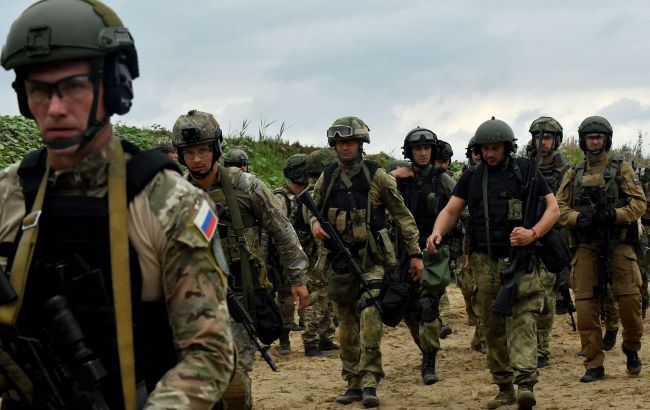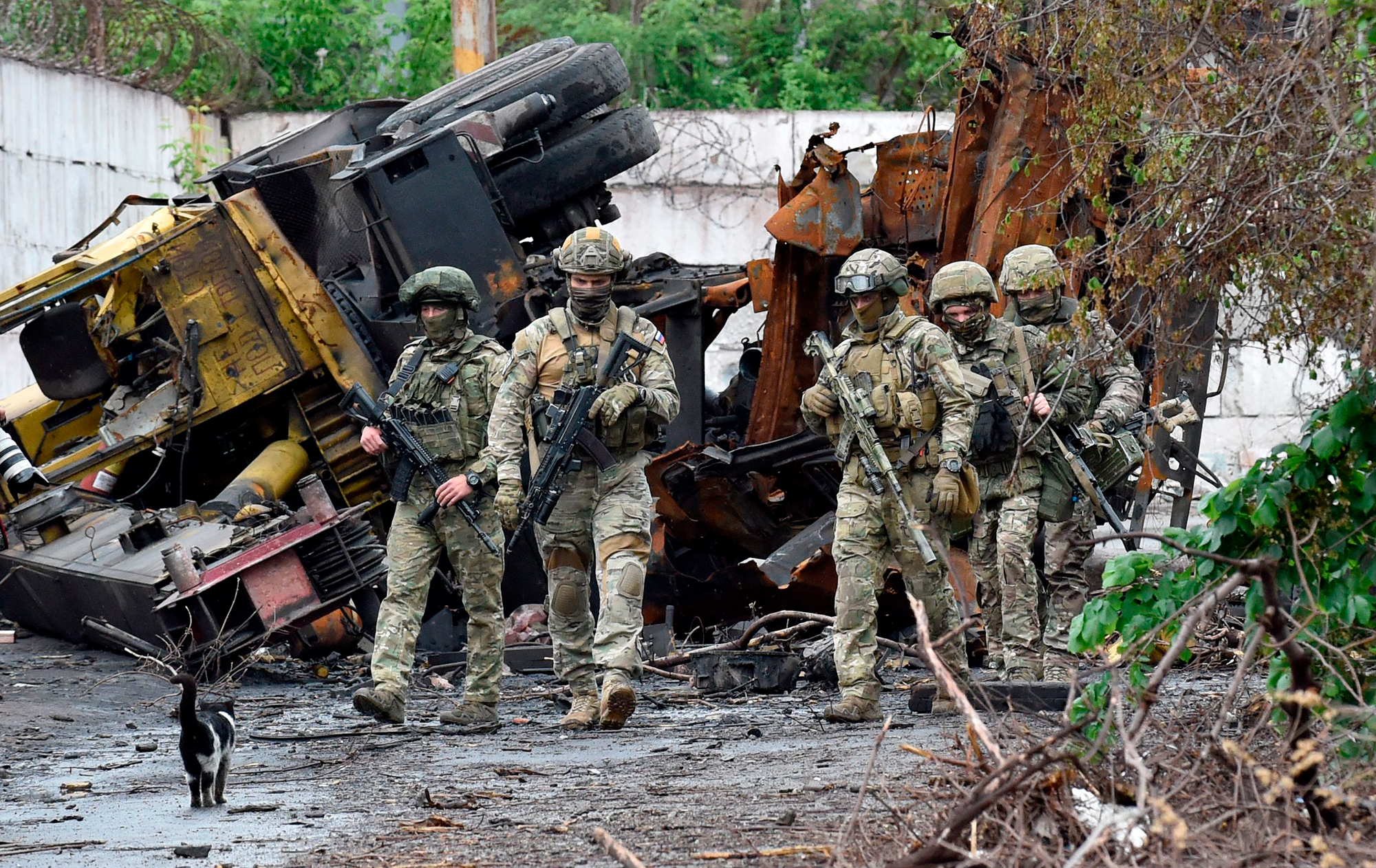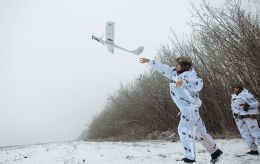Kremlin accumulates forces: Russia's potential offensive and amount of missiles it has
 Russia is preparing a new offensive in August or September (GettyImages)
Russia is preparing a new offensive in August or September (GettyImages)
Russia has resumed its attacks on ГUkraine's energy infrastructure and is preparing for a new offensive on the front lines this summer. Details of Moscow's plans are outlined in the RBC-Ukraine report.
Sources used during the preparation of the article: Defense Express, The Times, The Economist, Russian media, comments from the representative of the General Staff of the Armed Forces of Ukraine Vadym Skibitskyi, military experts Oleksandr Kovalenko, Ivan Kyrychevskyi, as well as conversations with representatives of the Defense Forces on condition of anonymity.
Russia continues its offensive operation in the east, despite the end of the prolonged and exhausting battles for Avdiivka. Moscow seeks to maximize the "window of opportunity" caused by the slowdown in assistance to Ukraine from the United States.
Foreign observers and Ukrainian government representatives warn that the enemy may strike with renewed force as early as this summer. President Volodymyr Zelenskyy has specifically said that himself. Several leading Western media outlets have described rather pessimistic scenarios for Ukraine's future, including the possibility of occupation forces advancing on Kyiv or Kharkiv.
Such bleak forecasts may appear more as an attempt to align Western policymakers. However, Moscow does indeed have plans regarding Ukrainian energy and the occupation of new territories this year.
Russia's actions in the spring: Attacks on energy infrastructure, destabilization, and preparation
The pace of the offensive operation, which Moscow initiated back in September, has somewhat slowed down. Currently, the adversary is essentially trying to prepare the initial conditions for a new strike after managing to regroup and gather additional forces.
Meanwhile, the Kremlin has made another move and decided to target energy infrastructure, attacking Ukrainian thermal power plants, combined heat and power plants, hydroelectric power stations, and gas storage facilities. Ukraine's Ukrenergo company has been forced to periodically implement emergency electricity shutdowns in some regions. The situation is mitigated by warm weather, as the heating season is already ending in some areas, significantly reducing the load on the power grid.
There were concerns and forecasts that Russia would begin attacks on Ukrainian energy earlier, when temperatures reached below zero. However, it became clear as early as December that Moscow decided to postpone this plan. According to reports, all the massive shelling conducted by the enemy in December, January, and February was mostly aimed at Ukrainian defense industry objects.
Such calculations by the Kremlin may be related to the presidential elections held in March. Perhaps Putin feared that if our energy facilities were systematically destroyed in winter, the same fate would befall those Russian regions reached by Ukrainian means of attack. Power outages and blackouts in Russian settlements would have created a negative background during the campaign, which Putin was not interested in. The end of the elections essentially gave him more freedom, and Ukrainian attacks on Russian oil bases and refineries were just a formal pretext for starting their air campaign.
.jpg)
Russia has begun attacking the energy sector, using new tactics to bypass Ukraine's air defense (photo: RBC-Ukraine, Vitaliш Nosach)
Russia's goal is not only to cut off electricity but also to destroy thermal power generation facilities to leave part of the Ukrainian population without heating for the next autumn-winter season. An additional task is to disrupt the functioning of our defense industry through damage to the power grid.
Unlike last fall and winter, Moscow has now begun to plan attacks more meticulously and inventively. Last year, these were mostly missile strikes with Kalibr and Kh-101/Kh-555 cruise missiles from Tu-95 bombers, which usually occurred during peak working hours once every 7 days, then once every 10 days, and then once every 14 days. And between them, nighttime strikes were carried out using Shahed drones.
Now the Russians have reduced the interval between strikes and are combining various means of attack in volleys. First comes a swarm of Shahed drones, followed by Kh-101 missiles, S-300 missiles, and a significant portion of ballistic and supersonic missiles – Iskanders-M, Kh-22, and Kinzhals. The attacks are conducted at night, which, on the one hand, complicates the detection of aerial targets for Ukraine's air defense units, and on the other hand, creates psychological and physical exhaustion among the civilian population.
Another characteristic feature is that during the recent strikes, the Russians have been actively using Kh-55 missiles. These missiles are also fired from Tu-95s to overload and distract our air defense system. According to RBC-Ukraine, during a series of recent shelling, Kh-55 missiles accounted for approximately 25% of the total barrage. And during one of the recent strikes on Kyiv, the enemy exclusively used this type of missile.
Situation with Russian missiles
According to the Ukrainian General Staff, Russia is planning several more massive strikes on Ukrainian energy facilities this spring. However, their missile reserves are dwindling, so they will need another pause to replenish.
"Currently in Russia, according to our estimates, there are about 950 high-precision missiles of operational-strategic and strategic levels with a range of over 350 kilometers. We observe a tendency that they usually try to keep their reserves at a level of no less than 900 missiles," said General Major Vadym Skibitskyi, a representative of the General Staff.
When Russians manage to accumulate over 900 missiles, they begin a series of strikes. Conversely, when reserves approach 900 units, there is a pause in mass strikes. According to Skibitskyi, the Russians are already approaching this limit.
"In April, according to our data, Russia plans to produce about 40 Kh-101 missiles. We predict that the Russians may conduct several more mass attacks (2-3, specifically mass ones), and then they will have to take another pause to accumulate missiles and drones. However, separate local shelling may continue during this time," Skibitskyi explained.
It is also noteworthy that since late September, the adversary has almost not launched other sea-based cruise missiles Kalibr. According to military sources, this type of missile is easier to counter by Ukraine's air defense system than the Kh-101. Additionally, the adversary is compelled to limit their use due to wear and tear and damage to their carriers. Military-political observer of the Information Resistance group, Oleksandr Kovalenko, asserts that infrastructure for servicing and storing the Kalibr sea-based cruise missiles has not yet been arranged in Novorossiysk, where the Black Sea Fleet was relocated after fleeing from occupied Sevastopol.
"The aggressor is accumulating reserves of 3M-14 Kalibr cruise missiles and has at least 260 units at their disposal. Moreover, they plan to produce 30 such missiles in April of this year," Skibitskyi said.
Considering the reserves of these missiles against the reduction of Kh-101, intelligence suggests that the adversary will resume their more active use soon. Meanwhile, the Russians have begun to employ another type of ballistic missiles launched from the territory of occupied Crimea. Interlocutors in various sectors of the Armed Forces still doubt whether the adversary has indeed acquired the Zircon missile, which until recently was considered only a prospective missile, or upgraded the Onyx-M.

Onyx missile launch (photo: defence.ua.com)
Nevertheless, the limited use of these means of attack can be interpreted as a demonstration by the Kremlin that they have finally acquired something resembling hypersonic missiles. However, the Kyiv air defense system has shown that it is still capable of intercepting them. The exact number of these new ballistic missiles in the enemy's possession is unknown.
"As for the fast missiles flying from the southern direction, it is currently difficult to determine whether they are Zircon missiles or modernized Onyx missiles. However, speaking of ordinary Onyxes, according to our data, the Russians have 440 units in stock. Currently, they have managed to resume their production at a rate of 6-8 missiles per month," Skibitskyi said.
Another element to expect from Russia this spring is an attempt to destabilize the situation inside Ukraine. This threat has recently been reported, particularly by the Ukrainian Ministry of Defense. According to sources within military circles, Moscow's destabilization will primarily take the form of information-psychological operations. For example, the number of unconfirmed reports (about alleged shelling threats, terrorist acts, etc.) in anonymous publics will increase, aiming to sow panic, fatigue, and disappointment among the population. At the same time, experts do not rule out that Russia may increase attempts to infiltrate Ukrainian territory with sabotage-reconnaissance groups.
Russia's summer plans: Troop buildup and potential new offensive
As early as this summer, the Russians may organize a new offensive operation. Given the pace of forming new units and troop recruitment, Moscow's military activities could intensify in August or September.
"They will need some time to compensate for the losses they suffered during the previous year and since the beginning of this year during the Avdiivka offensive campaign. Currently, they are not advancing as intensively along the front line as before, but they still try to do so. During the summer, they will form new units, complete those that are not yet formed, and around the second half of this year, they may indeed begin offensive operations," believes Kovalenko.
Speaking of Russia's new offensive, it should be noted that their objectives on the front remain the same – complete capture of the Donetsk and Luhansk regions. The next priority, in case of advancement in Donbas, is the expansion of the occupation to Zaporizhzhia region, located on the left bank of the Dnipro River.
Therefore, their new operations, according to one scenario, could unfold towards the Sloviansk-Kramatorsk agglomeration. For this, the occupiers may intensify activities both in the Lyman and Siverskyi directions to encircle this area. Another variant of their actions involves another attempt to capture Kurakhove and Vuhledar.
"It is quite possible that the adversary may also consider the Vuhledar area for an offensive. It is crucial for them to take control of Road 0532 – a logistical artery from Maryinka to Vuhledar. The enemy is currently trying to create conditions for cutting this logistical artery in the Novomykhailivka area. They are also pushing towards Pobeda and Vodiane from Solodke. In fact, they are creating conditions to push towards Vuhledar not only from the south but also from the north," says Kovalenko. He also believes that the Russians may attempt to reinvigorate their offensive actions in the Kupiansk area in the second half of the year.
Regarding the possibility of an offensive on Kyiv, which some Western media predict, it currently seems highly unlikely. For Moscow to organize such an operation, they would need to accumulate no less than 100,000 troops alongside the Kyiv region, particularly from the North, on the territory of Belarus. To deploy such a force, conduct its deployment, combat coordination, and so forth, it would take at least 3-4 months, and this cannot go unnoticed by Ukraine's special services. Currently, according to RBC-Ukraine, no such activity is observed in the North.

Russia may launch a new offensive in Donbas this summer (photo: GettyImages)
The question remains open: will Putin decide to announce a new wave of mobilization in Russia similar to the one conducted in the fall of 2022? Sources within the Ukrainian Armed Forces believe that the Kremlin does not urgently need this. For 2024, the Russian Ministry of Defense and the General Staff have planned to recruit approximately 500,000 personnel into the military without declaring an open mobilization - both to replenish losses and to form new units. And they are likely to succeed, considering that at least 30,000 individuals are already joining the Russian army each month.
Moreover, Putin has signed a decree to conduct a spring draft starting from April 1, which will last until mid-July. 150,000 Russians will be conscripted, and an estimated 30% of them are expected to agree to switch to contract service, according to one of the informed RBC-Ukraine sources. Thus, they could effectively be deployed to the front lines. At least a similar percentage of conscripts - 30-40% - decided to sign contracts for further service during the last fall draft.
The task of the Ukrainian army this year is to maximally restrain the enemy's advances, effectively conduct defensive operations, and continue to destroy enemy targets and depots, particularly in the occupied Crimea. However, Ukraine's capabilities will objectively depend on the volumes of military aid from Western partners. None of the interlocutors within military circles doubts that it will continue in 2024. The main question is in what volumes.
Ivan Kyrychevskyi, an expert from the information and consulting agency Defense Express, said that currently Ukrainian units on the front line are somewhat recovering from the ammunition shortage that existed back in January.
"This could have happened thanks to our defense budget, and also thanks to the EU, which, despite widespread discourse, somehow fulfills its promise regarding ammunition. According to the Czech initiative, ammunition will likely arrive closer to summer. But in reality, there are sources worldwide where ammunition can be obtained. The main thing is the speed in resolving this issue. Even Serbians are ready to sell ammunition to Ukraine, as well as South Africa, which is a country that is a major source of 155 mm caliber ammunition. Türkiye could also be one of the sources," the interlocutor said.
In order to seize the initiative on the front lines in 2024, the Ukrainian army needs all types of weapons and equipment. And even if Ukraine suddenly loses such an important partner as the USA, Europe, in the foreseeable future, is capable of taking over this "baton."
"I think we should take into account all geopolitical factors and the fact that Europe has all the capabilities to become no less powerful than the United States. Because the United States themselves are relinquishing the role of security guarantor in confrontation with Russia. We need to prepare for the reality where Europe will indeed replace the United States in terms of security for Ukraine," Kyrychevskyi believes.

